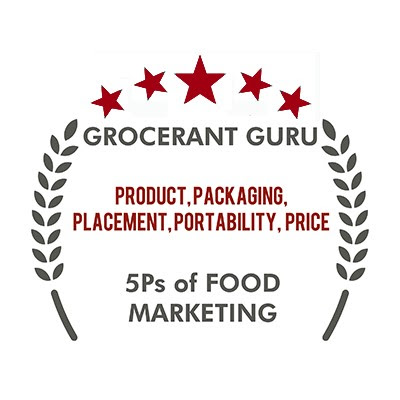There is not a regular
reader of this blog that does not know that both Gen Z and Millennials drive
for food discovery is the number one undercurrent driving new avenues of fresh
food distribution and branded customer migration according to Steven Johnson, Grocerant Guru® at Tacoma, WA based Foodservice Solutions®.
If success does leave
clues and it does The Hartman
Group is one of the very best at picking them up and refining the detail within
those clues. So, now The
Hartman Group’s new research indicates that as younger populations with
more exposure to new global flavors and a desire to seek them out, Generation Z
and millennials are more likely to see snacking as an avenue for discovery of
new taste experiences.
According to the
firm's Snacking:
Emerging, Evolving and Disrupted report,
56 percent of Gen Z and 56 percent of millennials agree that snacking allows
them to try new global flavors vs. 42 percent of Gen X and 20 percent of baby
boomers.
Now
consider the New Korean BBQ Chicken
Taquito Rolls at 7-Eleven Stores. For most
foodies 7-Eleven is not top of mind for new flavors, fresh food, but when you
think food discovery and full- flavored Korean BBQ Chicken Taquito Rolls on a
roller grill? Well, it that is not a
platform for discovery for new foodies, nothing is. Our Grocerant Guru® believes it will be a
hit. Once again nice job Joe! (Joseph DePinto CEO
7-Eleven)
It is presented in
four pillars. We think you will like
this, and will share an article about it it with you.
“As the report captures
how snacking motivations and needs shift according to the occasion, context and
individual.
The four pillars are:
1. Nourishment: Snacking that
meets needs for daily sustenance, long-term wellness and health management
2. Optimization: Snacking that helps
one fulfill physical and mental performance demands
3. Pleasure: Snacking that
fulfills emotional desires for enjoyment, reward and discovery
4. Distraction: Snacking that
arises from the need to distract, whether due to stress, boredom or other
reasons
The report found that
more than half of all snacking (51 percent) reflects some need for pleasure — a
driver that intentionally addresses consumer needs for enjoyment, sensory
engagement, taste exploration, and permissible indulgence.
A top motivation in
this pillar is discovery and play. With a growing number of food types,
provenances, preparation methods, and food purveyors, discovery has never been
greater or more accessible. Cultural values that embrace diversity and new
experiences have further heightened the desire for food exploration. Snacking
occasions involving smaller quantities, lower price points, and fewer
nutritional, social, or cultural expectations provide a way to discover and
play with food through lower-risk occasions, according to The Hartman Group.
Many
pleasure-oriented snacking occasions tend to showcase sweeter flavors, and
though some seek out bold or unusual flavors, familiar tastes and formats
remain important. Key attributes of the pleasure snacking driver include:
·
Good
taste
·
Distinctive
flavor/texture/aroma
·
Iconicity
& nostalgia
·
Surprise
& delight
·
Product
design & aesthetics
·
Global
flavors
·
Interactive
characteristics
·
Convenience
Want more information
on from the Hartman Group? Click this link: Snacking:
Emerging, Evolving and Disrupted”
Success does
leave clues. One clue that time and time again continues to resurface is “the
consumer is dynamic not static”. Regular
readers of this blog know that is the common refrain of Steven Johnson, Grocerant Guru® at Tacoma, WA
based Foodservice Solutions®. Our
Grocerant Guru® can help your
company edify your brand with relevance.
Call 253-759-7869 for more information.


























